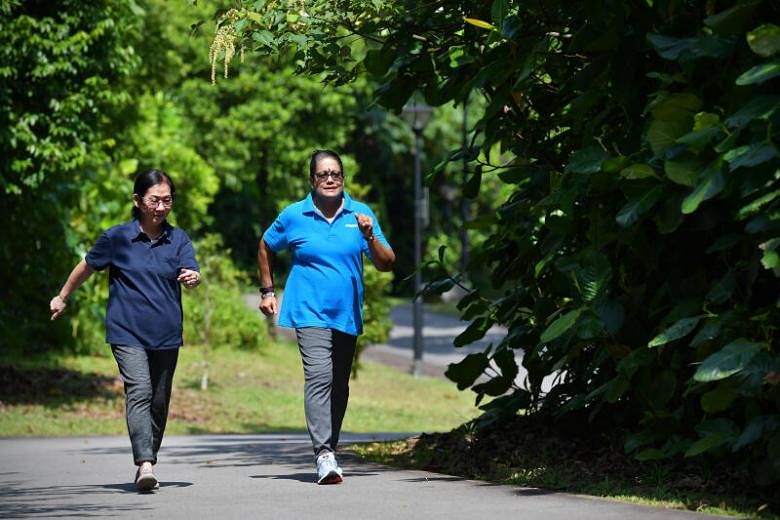SINGAPORE - Madam Ahsathiamal Subramanian, 65, has diabetes. The diagnosis two years ago means she has all five risk factors for metabolic syndrome, which puts her at serious risk of developing chronic conditions such as heart disease and stroke.
Over the years, she has also been found to have hypertension, high triglyceride levels, low levels of good cholesterol and excess fat around the waist as she is overweight, the four other risk factors.
A diagnosis of metabolic syndrome requires one to have three of the factors.
The retiree is one of many seniors in Singapore who have metabolic syndrome.
A study conducted by researchers from the National University of Singapore (NUS) Yong Loo Lin School of Medicine's Department of Medicine showed that metabolic syndrome affected almost one in two people aged 65 and above, with a higher prevalence in women than men above 70 years old.
Eight in 10 women above the age of 85 were found to have the syndrome.
The study, which took place between April 2015 and August 2016, evaluated 722 participants in Singapore aged 65 and above.
The findings were published in Dove Medical Press, a publisher of peer-reviewed scientific and medical journals, in July this year.
Associate Professor Reshma Merchant from NUS Medicine, who was one the leads in the study and authored the paper, said: "With ageing, there is increased prevalence of chronic diseases, higher fatty tissue and lower muscle mass which puts older adults at a higher risk of getting metabolic syndrome. A sedentary lifestyle and lack of exercise or manual work also puts them at an increased risk."
In Madam Subramanian's case, a hectic work life, including a punishing daily shuttle between Telok Blangah where she lives and Johor Baru where she was a vice-principal at a primary school, gave her a false sense that she was active.
In fact, she had often felt giddy and could not stand up for too long without feeling faint. When she consulted a doctor about her giddy spells 20 years ago, she was found to have hypertension.
There are also ethnic differences in the prevalence of metabolic syndrome, with more than one in two Indians suffering from the condition as compared with one in three Chinese and one in two Malays.
Prof Merchant said there may be a genetic influence on how fat is distributed in different ethnic groups.
"Indians and maybe Malays tend to have higher body fat or abdominal obesity even at a normal range of body mass index. Abdominal obesity or increased visceral fat in Indians is a marker of the presence of insulin resistance, which are risk factors for hypertension, Type 2 diabetes and heart disease... Metabolic syndrome can develop after a prolonged state of insulin resistance," she said.
Insulin resistance means the body does not use insulin efficiently to lower glucose and trigly-ceride levels.
Prof Merchant, who is the head and senior consultant at the National University Hospital's Division of Geriatric Medicine, said: "In insulin resistance, the insulin receptors which act as the doorman guarding glucose entry into the cells become desensitised. As the insulin released in response to meals is not so effective, the body initially produces more insulin which can cause higher blood pressure, blood fats, inflammation, blood clotting, and fat storage in the body."
If left unaddressed, the arteries can be damaged, leading to stiffness, calcium deposition and plaque formation.
The NUS researchers also found a weaker hand grip strength among seniors to be an indicator of metabolic syndrome.
Adjunct Assistant Professor Samuel Chew, senior consultant at Changi General Hospital's Department of Geriatric Medicine, who read the findings of the study, said the components which make up metabolic syndrome such as the loss of sensitivity to insulin may be a result of poor muscle health.
"This is because muscles are a major contributor in the regulation of glucose metabolism in the body. Healthy muscles release and enhance the functioning of hormones and other mediators of glucose metabolism."
Prof Merchant noted that the loss of muscle mass and strength due to ageing, also known as sarcopenia, is associated with a two-fold increased risk of metabolic syndrome.
Madam Subramanian, who has two daughters aged 34 and 27, said that her "muscles are not as strong as before" and she has been feeling aches and pains in her shoulders when she carries heavy things.
The good news is that metabolic syndrome is reversible. The key to doing so is weight loss and exercise, which work together to lower blood pressure and cholesterol and help improve insulin resistance.
Prof Chew said lifestyle and dietary changes are important to improve and manage the condition.
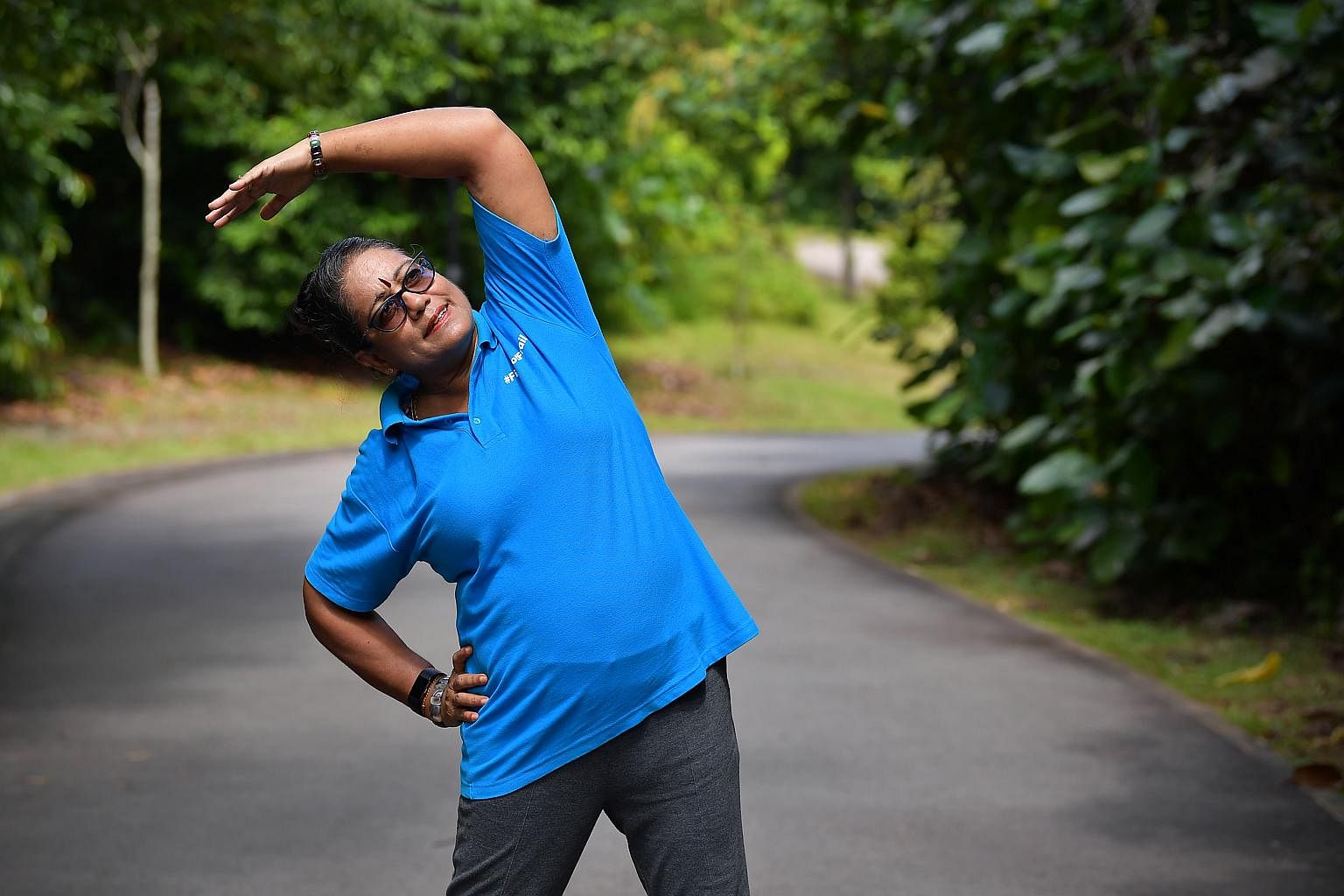
Madam Subramanian has been exercising regularly by doing zumba, low-impact aerobics and yoga and taking brisk walks in the park.
She also takes part in a physical exercise programme called Healthy Ageing Promotion Programme For You (Happy), which helps seniors improve their mental well-being, memory, functional ability and strength through various exercises.
This has helped her lose 4kg over two years. She has also managed to bring her blood pressure down to a normal level and is maintaining a healthy level of sugar intake by watching her diet.
"I believe I have to continue to keep myself active so that the aches don't set in," she said.
Retiree Ng Moy Loang, who has hypertension, low levels of good cholesterol and is overweight, also takes part in the Happy programme.
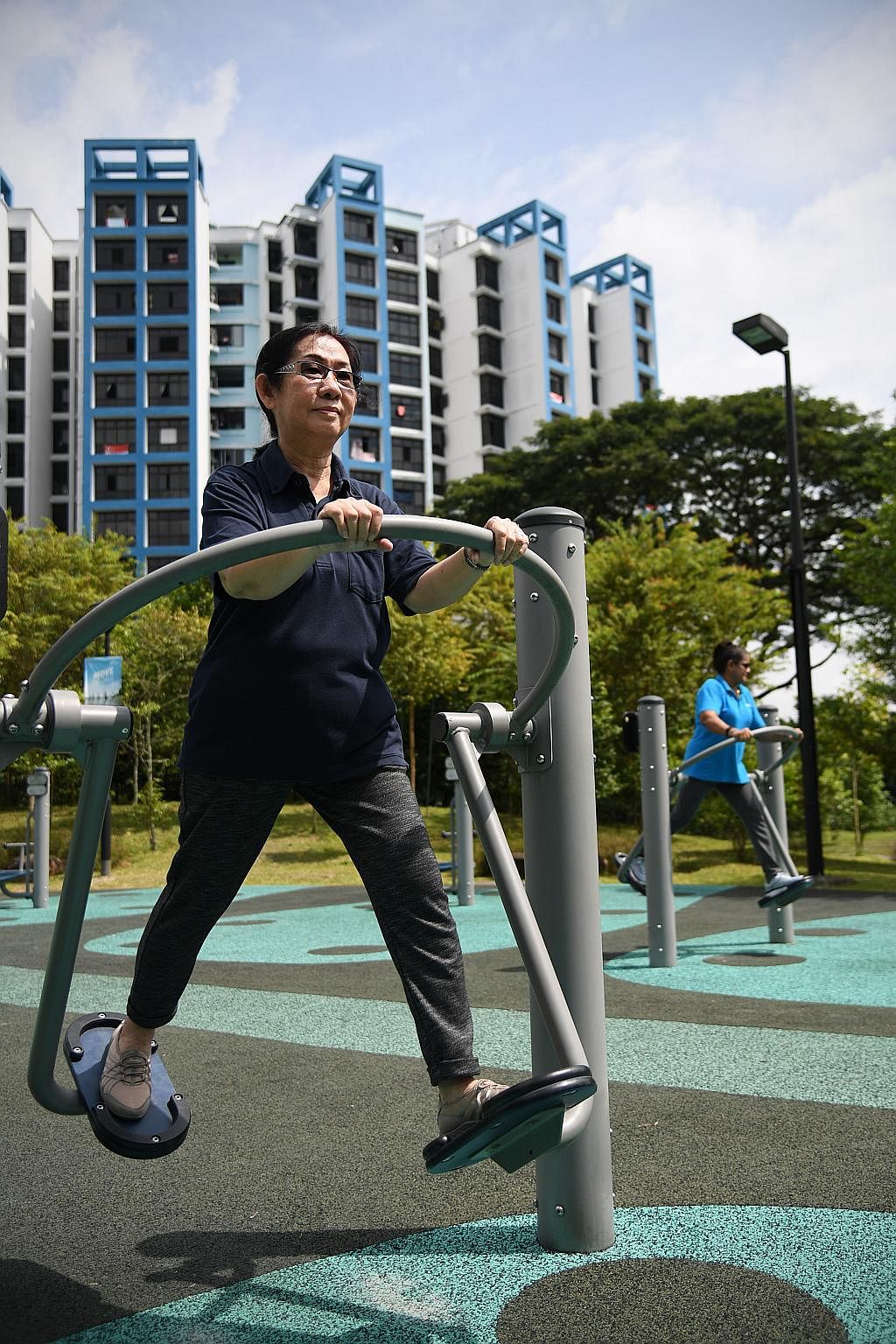
"It's important for seniors like us to be physically active so that we can avoid health problems. Regular exercise has helped to increase the levels of my good cholesterol and lower my high blood pressure," said the 69-year-old, who was a production planner in a printing firm.
The mother of three daughters aged 42, 39 and 26 also tries to keep to a healthy diet of less saturated fats and more fruit and vegetables.
Covid-19: Worse outcomes for those with metabolic syndrome
Prof Chew said regular aerobic exercise of moderate intensity for at least 30 minutes every day has been shown to improve blood pressure, lipid profile, insulin sensitivity and reduce adverse cardiovascular outcomes associated with metabolic syndrome.
He also advised seniors with the condition to do resistance exercises at least twice a week to enhance muscle health.
Prof Merchant cautioned against consuming sugary food and drinks and processed food. Instead, she advised adopting a diet rich in whole grains, fruits, vegetables, lean meat, skinless poultry and non-fried fish, and low-fat or fat-free dairy products.
She also highlighted the importance of going for a medical check-up annually to screen for diabetes, and high blood pressure and cholesterol.
A study done by researchers from Tulane University in New Orleans found that people with metabolic syndrome are more likely to have worse Covid-19 outcomes.
The study explored the individual effects of obesity, hypertension and diabetes on Covid-19 severity and compared them with their combined effect in patients with metabolic syndrome.
The research, published in peer-reviewed medical journal Diabetes Care, showed that Covid-19 patients with metabolic syndrome were more than three times more likely to die than those without it. They were also nearly five times more likely to be admitted to an intensive care unit or require a ventilator.
Said Prof Merchant: "In the current climate, it is important for people to strengthen their immune response by exercising regularly, drinking enough water and maintaining a healthy diet of fruit and vegetables."
She also stressed the importance of practising social distancing and good personal hygiene habits.
EXERCISES TO HELP MANAGE METABOLIC SYNDROME
A sedentary lifestyle leads to a loss of muscle mass and an increase in fatty tissue. This may cause reduced muscle strength and reduced sensitivity to insulin in the body, which is associated with a higher risk of developing metabolic syndrome.
Incorporating healthy lifestyle habits such as regular exercise is essential to prevent and manage metabolic syndrome. Ms Lim Jiamin, a senior physiotherapist at Changi General Hospital, shares five exercises that seniors can do.
MARCHING ON THE SPOT
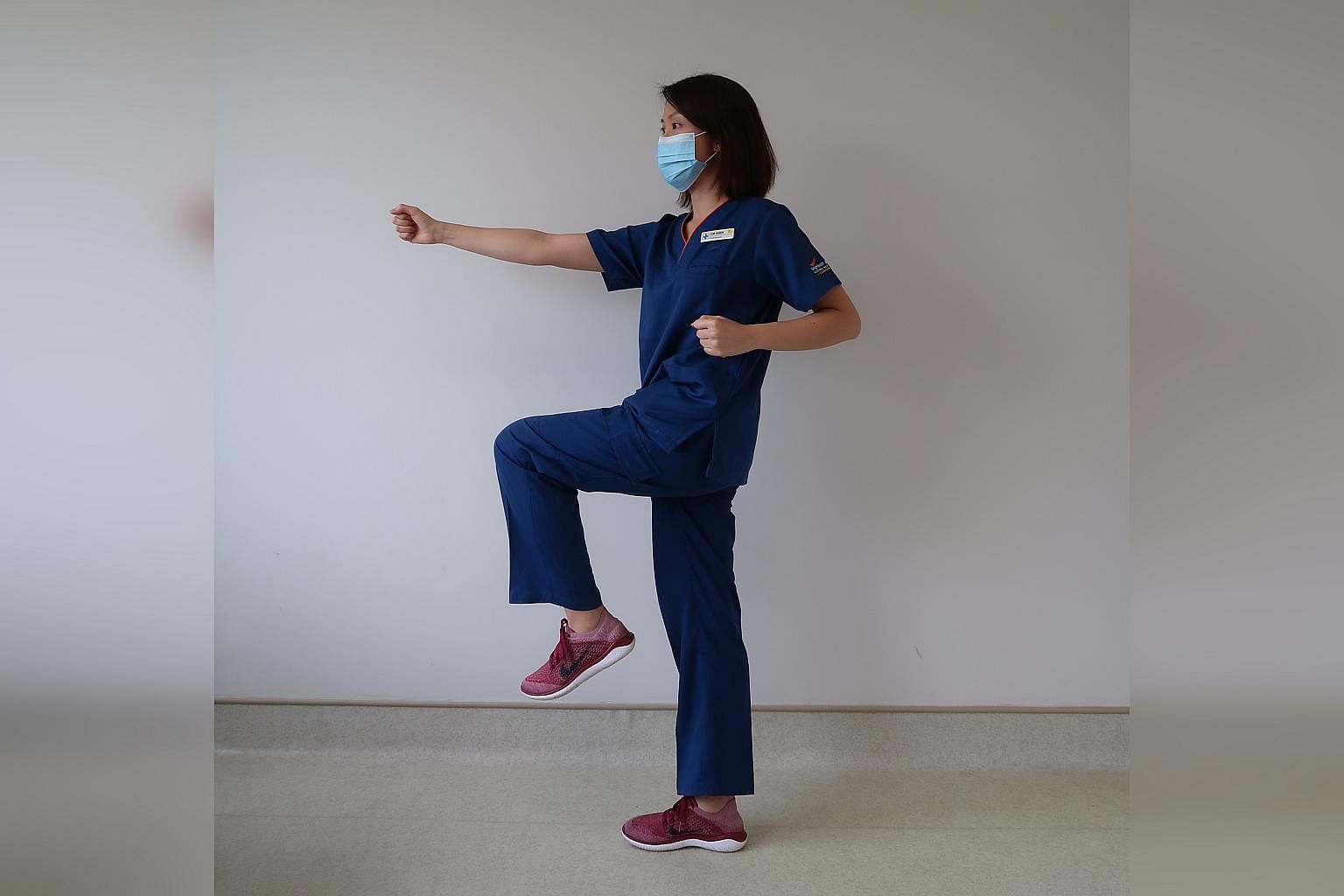
1. Stand an arm's length away from a wall or a sturdy support surface.
2. Raise the left leg to 90 degrees and punch forward with the right hand.
3. Continue with the opposite side. Repeat alternating sides.
Tip: If this is challenging, hold on to a sturdy surface instead of punching forward, and progress gradually.
SIT TO STAND
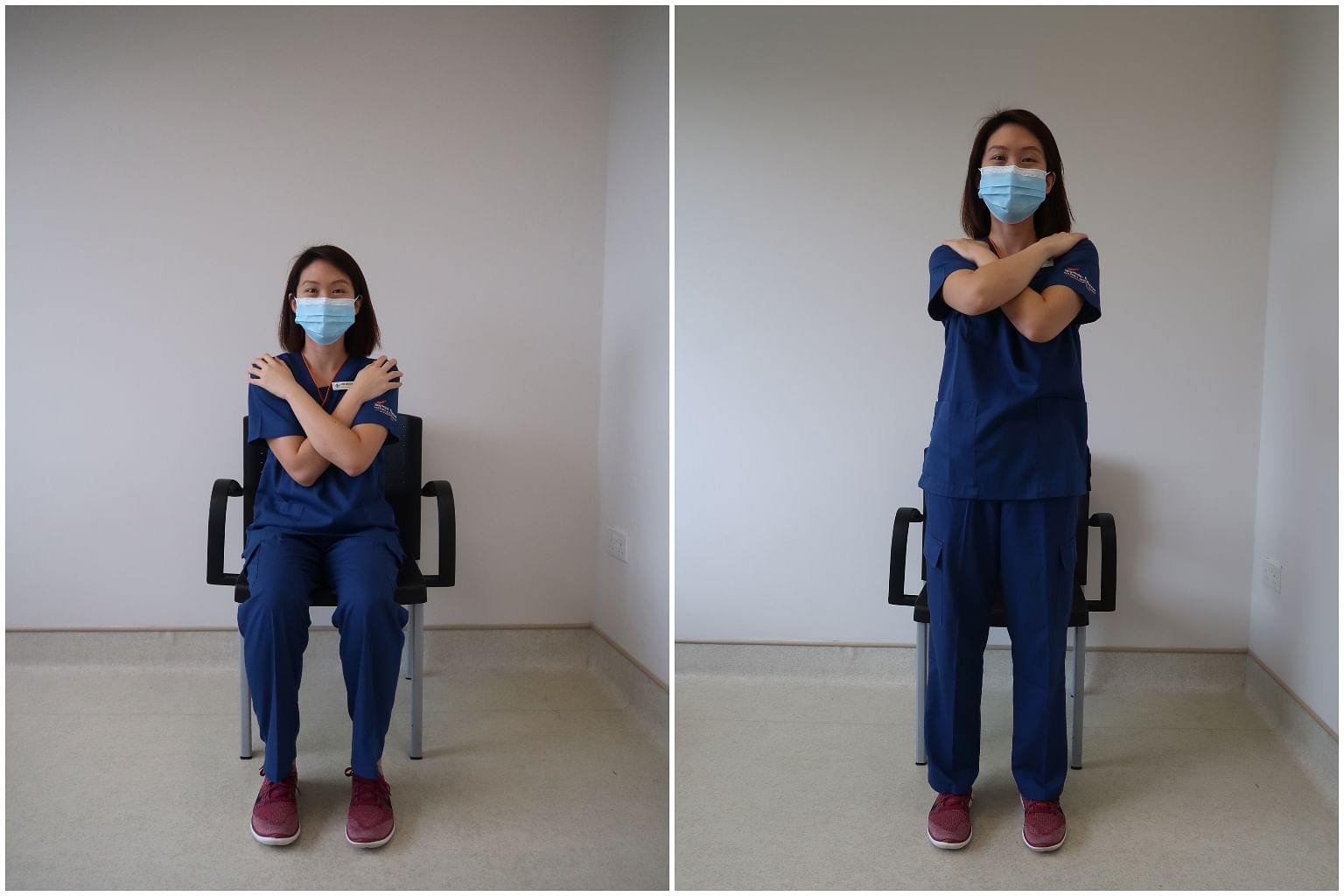
1. Sit on a sturdy chair with an armrest and cross your arms across your chest.
2. Ensure that your knees are bent at 90 degrees.
3. Push off to stand up straight.
Tip: If this is challenging, you may push with your hands on the armrest of the chair and progress gradually.
SIDE STEPPING
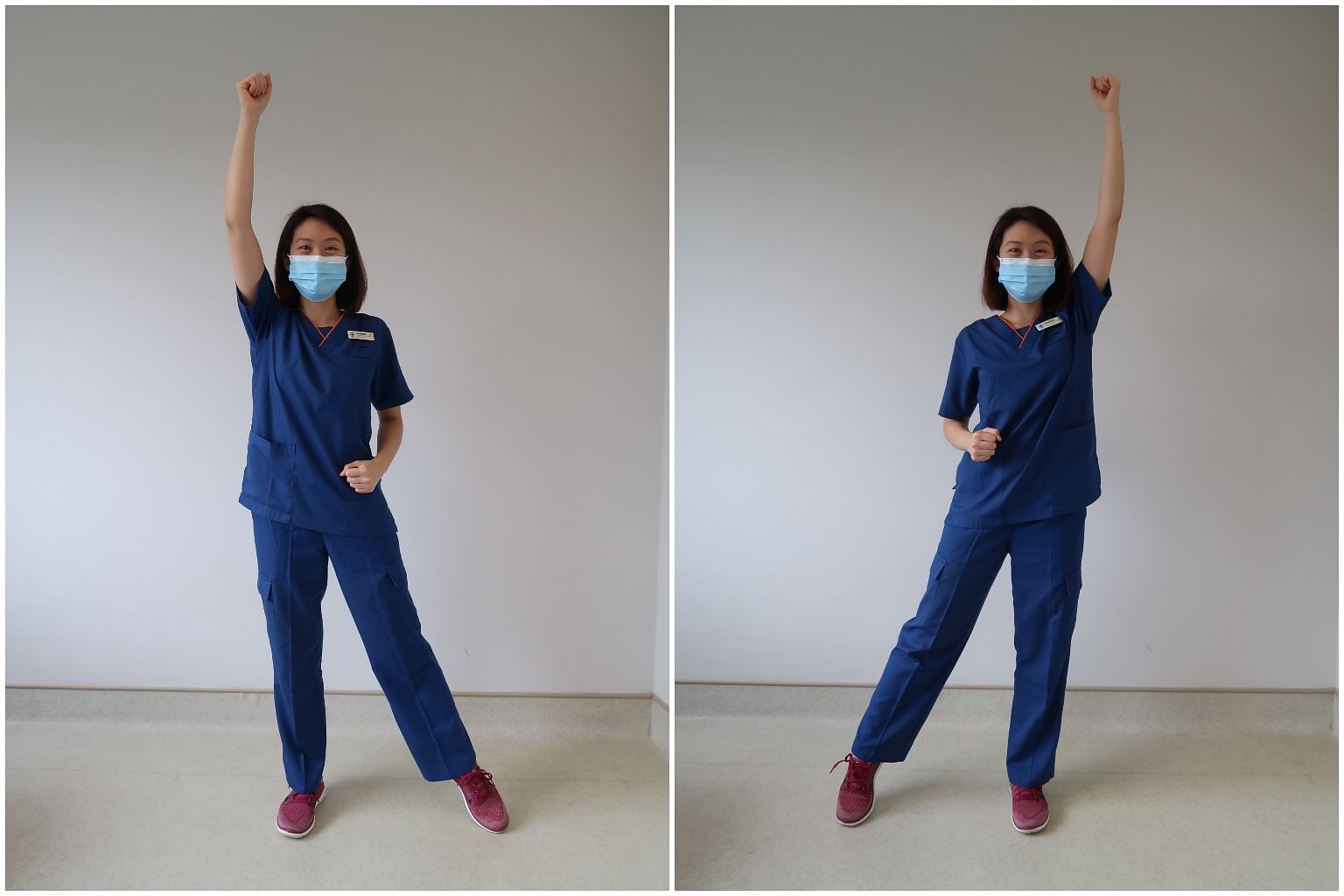
1. Stand close to a wall or sturdy support surface.
2. Step sideways to the right with your right foot and punch to the ceiling with the left hand.
3. Continue with the opposite side. Repeat alternating sides.
Tip: If this is challenging, hold on to a sturdy surface instead of punching upwards, and progress gradually.
WALL PUSH-UP
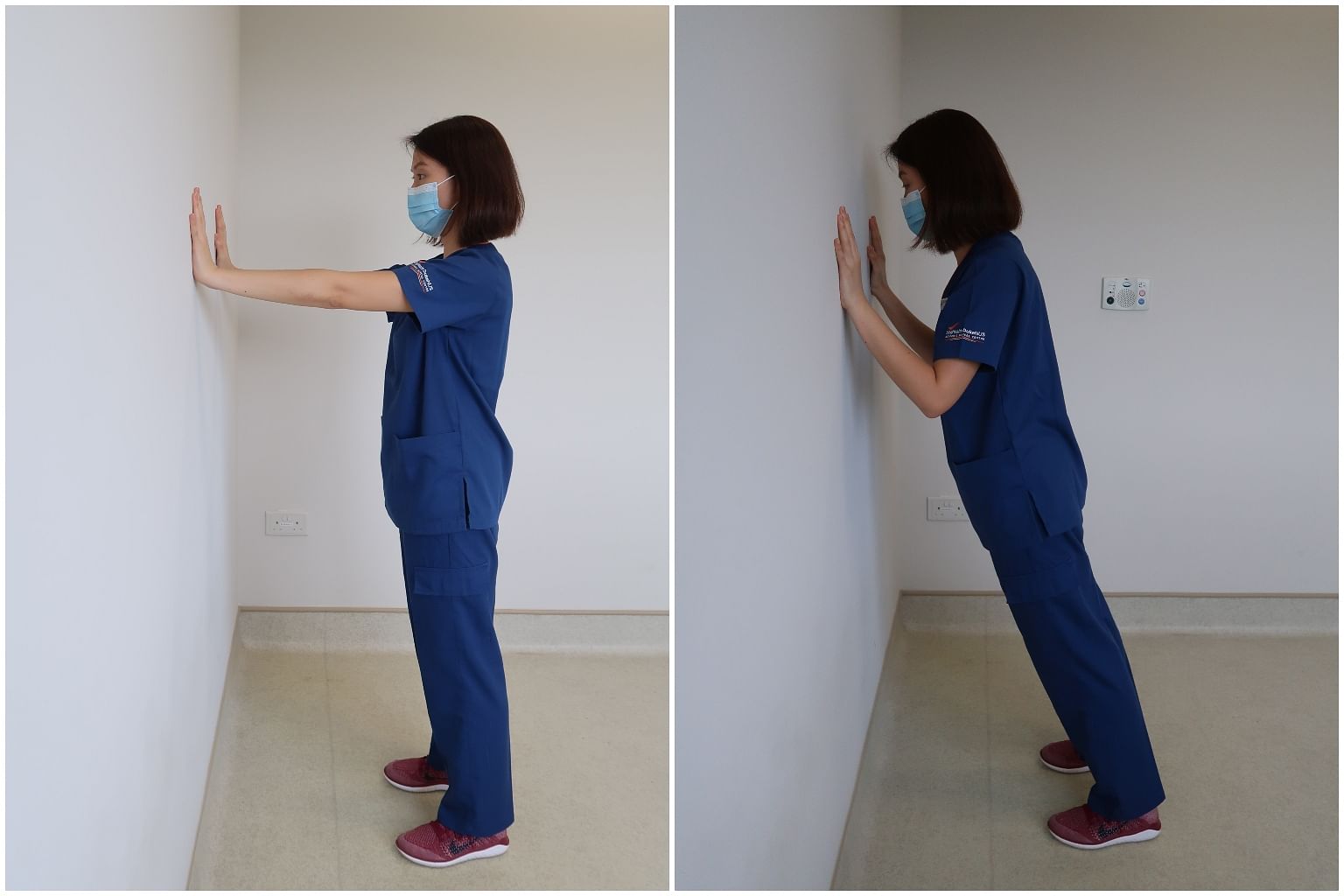
1. Stand one arm's length away from the wall and place your palms flat on the wall at shoulder height and width apart.
2. Keep your back straight.
3. Bend your elbows and lean your body forward while keeping your heels on the ground.
4. Slowly push yourself back until your arms are straight while keeping your elbows relaxed.
Tip: If this is challenging, stand closer to the wall and progress gradually.
WALKING
This is one of the easiest forms of exercise. Aim to walk at least 10,000 steps daily. You may consider jogging or running, or climbing stairs to add variety and challenge. You may also try cycling or swimming, which are easier on the knees.
Ensure regular breathing throughout your exercise. You should stop exercising and consult a medical professional if you experience pain and discomfort. Consult a medical professional for advice if needed.
